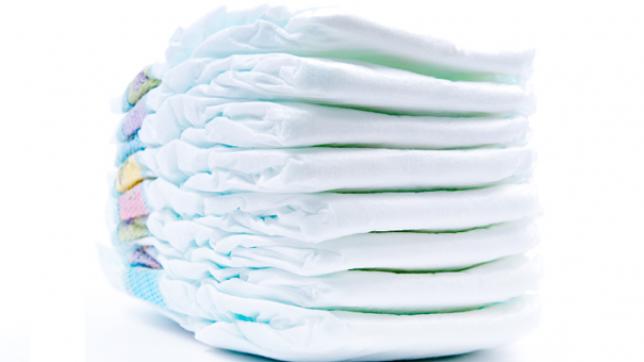Disposable Nation – an environmental consideration on single use baby diaper and adult incontinence pad disposal
So what is the environmental cost of single-use nappies / incontinence pads?
An estimated three billion nappies / incontinence pads are thrown away every year in the UK, accounting for 2-3% of all household waste, according to recycling charity Wrap.
This is a fairly old estimate based on the number of babies / toddlers / incontinence adults in the population and daily usage rates.
It may have shifted slightly but gives a reasonable ballpark.
The vast majority of nappies are not recyclable and must be thrown away with general waste. This means they will probably end up in landfill or being burnt.
Disposable diapers / incontinence pads are the 3rd largest consumer item in landfills, and represent 30% of non-biodegradable waste. The only other items that outnumber the amount of disposables in landfills are newspapers and beverage and food containers.
According to a report from the U.S. Environmental Protection Agency, disposable diapers introduce pathogens into the environment from the solid waste they contain. While the effects of these pathogens are still being studied, experts agree that pathogens could make their way into a water source, potentially polluting drinking water.
Studies indicate that diapers in landfills take up to 500 years to degrade, creating methane and other toxic gasses in the process, and their manufacture uses volatile chemicals that also end up in the eco-system. In addition, estimates indicate that up to 200,000 trees are lost each year to make disposable diapers for babies in the U.S. alone.
It takes hundreds of years for disposable diapers to decompose when exposed to sunlight and air. Since diapers are dumped into landfills, covered and not exposed to sun or air at all, nobody knows how many hundreds—or even thousands—of years they could be around.
Energy can be harnessed from burning waste and used for fuel but this also produces greenhouse gases - as do landfills.
The main alternatives are:
- cloth nappies / adult incontinence underwear that can be washed and reused
- biodegradable nappies
Wrap says by the time they are potty trained, a baby could have used 4,000 to 6,000 disposable nappies, or 20 to 30 reusable nappies
There's also a financial saving to be had - although those wanting the convenience of disposables along with environmental benefits might find themselves paying more for biodegradable nappies.
Throwaway nappies contain plastic and so does the packaging they come in.
Much of this plastic will go to landfill. And so, to put it politely, will the nappy's contents, which can then end up in the water system.
When reusable nappies / incontinence pads are washed, on the other hand, faeces end up in the waste water supply, which means they are then treated in a water treatment plant, in the same way adult waste is.
But although on many measures reusable nappies are better for the environment, they come with their own costs.
In particular, reusable nappies seem to be worse in terms of carbon emissions.
The Environment Agency, in 2008, estimated that over the two and a half years it reckoned a typical child would wear nappies, disposables would create 550kg (1,200lb) of carbon emissions. And reusables would create 570kg of carbon emissions.
That's because of the energy it takes to wash and dry them.
The carbon emissions associated with disposable nappies, on the other hand, are mainly down to the production of the materials used to construct them.
And, arguably, parents and guardians have more control over the carbon emissions created by reusable nappies.
Washing them on a full load, a more energy efficient setting or by hand, and hanging them out to dry rather than tumble-drying can all reduce the environmental impact substantially.
But this suggests a further hidden cost - the labour involved in the extra laundry created.
The Office for National Statistics has estimated the cost of unpaid work done in households in the UK. And the unpaid work UK households undertake to do laundry alone was valued at about £90bn in 2016.
Meanwhile, the environmental impact of disposable nappies could also be reduced by changing the materials they are made of or disposing of them differently.
But these changes are in the hands of manufacturers and the waste disposal system rather than families.
Enter Wearever Washable Incontinence Under-wear
Wearever offers ground-breaking undergarments for people with urinary incontinence, providing the ultimate reusable, washable alternative to adult diapers. The men’s briefs and women’s panties are especially beneficial for active individuals who want to continue their normal lifestyle without worry or emotional stress resulting from incontinence. The garments’ innovative absorbency stems from its Unique-dri (TM) three-layer fabric system, made up of a woven material of polyester, rayon and anti-microbial fibres.
With absorption capacities of up to 650 ml and a 250+ wash cycle, Wearever is kinder to your pocket and the environment. You can now buy Wearever products today on iMEDicare, available for him and for her.


